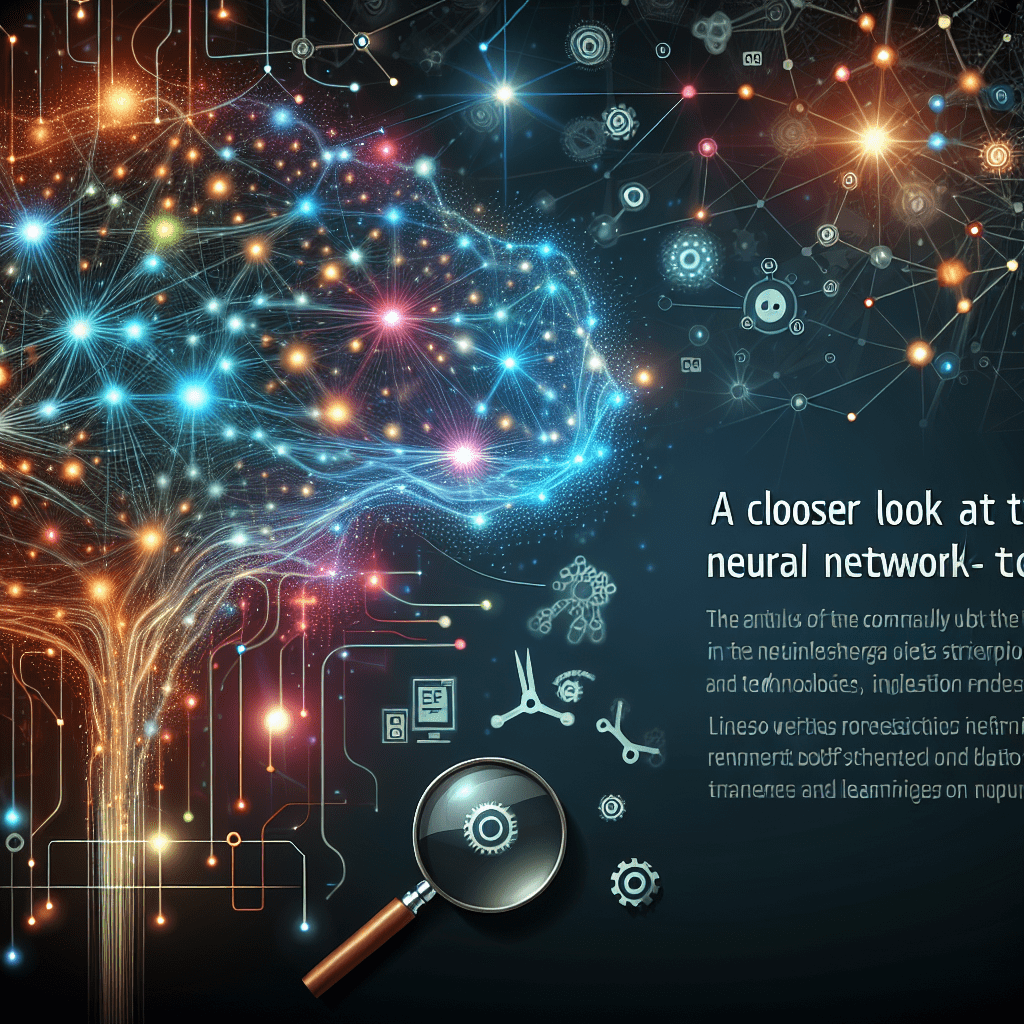Neural networks have revolutionized the field of artificial intelligence and machine learning in recent years. These sophisticated algorithms mimic the way the human brain works, allowing computers to learn from and make sense of complex data like images, text, and speech.
The Evolution of Neural Networks
Over the years, neural network technology has evolved significantly, with new tools and technologies constantly being developed to improve their performance and capabilities. In this article, we will take a closer look at some of the latest advancements in neural network tools and technologies.
TensorFlow
TensorFlow is an open-source machine learning framework developed by Google. It provides a comprehensive ecosystem of tools, libraries, and community resources to help developers build and deploy machine learning models efficiently. TensorFlow is widely used in research and production applications, making it one of the most popular neural network tools available today.
PyTorch
PyTorch is another popular open-source machine learning library that is known for its flexibility and ease of use. Developed by Facebook, PyTorch is widely used by researchers and developers for building neural networks and deep learning models. Its dynamic computation graph makes it easier to debug and experiment with different architectures.
Keras
Keras is a high-level neural network API written in Python that allows for easy and fast experimentation with neural networks. It is designed to be user-friendly and modular, making it a great choice for beginners and experienced developers alike. Keras can be used with TensorFlow or Theano as backend libraries, providing a seamless integration with popular deep learning frameworks.
Advancements in Neural Network Technologies
Neural network technologies continue to evolve rapidly, with new advancements being made in areas such as deep learning, reinforcement learning, and natural language processing. Some of the latest developments include:
Transformer Architecture
The transformer architecture has gained popularity in recent years for its ability to handle long-range dependencies in sequences more effectively than traditional recurrent neural networks. Transformers have been used in state-of-the-art models for tasks like language translation, text generation, and image recognition.
Reinforcement Learning
Reinforcement learning is a type of machine learning that focuses on learning optimal behavior through trial and error. Recent advancements in reinforcement learning have led to breakthroughs in areas like game playing, robotics, and decision-making. Algorithms like Deep Q Networks (DQN) and Proximal Policy Optimization (PPO) have shown impressive results in complex environments.
Generative Adversarial Networks (GANs)
GANs are a class of neural networks that are used to generate new data samples by training two networks – a generator and a discriminator – against each other. GANs have been used for tasks like image generation, style transfer, and data augmentation. Recent advancements in GAN technology have led to more realistic and high-quality outputs.
Conclusion
In conclusion, neural networks continue to be at the forefront of artificial intelligence research, with new tools and technologies pushing the boundaries of what is possible. TensorFlow, PyTorch, and Keras are just a few examples of the latest neural network tools that are shaping the future of machine learning. As advancements in deep learning, reinforcement learning, and GANs continue to accelerate, we can expect even more exciting developments in the field of neural networks in the coming years.
FAQs
What are neural networks?
Neural networks are a type of machine learning algorithm that is inspired by the way the human brain processes information. They consist of interconnected nodes (neurons) that work together to learn patterns and make predictions from data.
How are neural networks used in practice?
Neural networks are used in a wide range of applications, including image and speech recognition, natural language processing, autonomous vehicles, healthcare diagnostics, and financial forecasting. They are particularly well-suited for tasks that involve processing complex and unstructured data.
What are some common neural network architectures?
Some common neural network architectures include feedforward neural networks, convolutional neural networks (CNNs), recurrent neural networks (RNNs), and transformers. Each architecture is designed for specific types of tasks and data structures.
Quotes
“The development of full artificial intelligence could spell the end of the human race… It would take off on its own, and re-design itself at an ever-increasing rate.” – Stephen Hawking
#Closer #Latest #Neural #Network #Tools #Technologies


